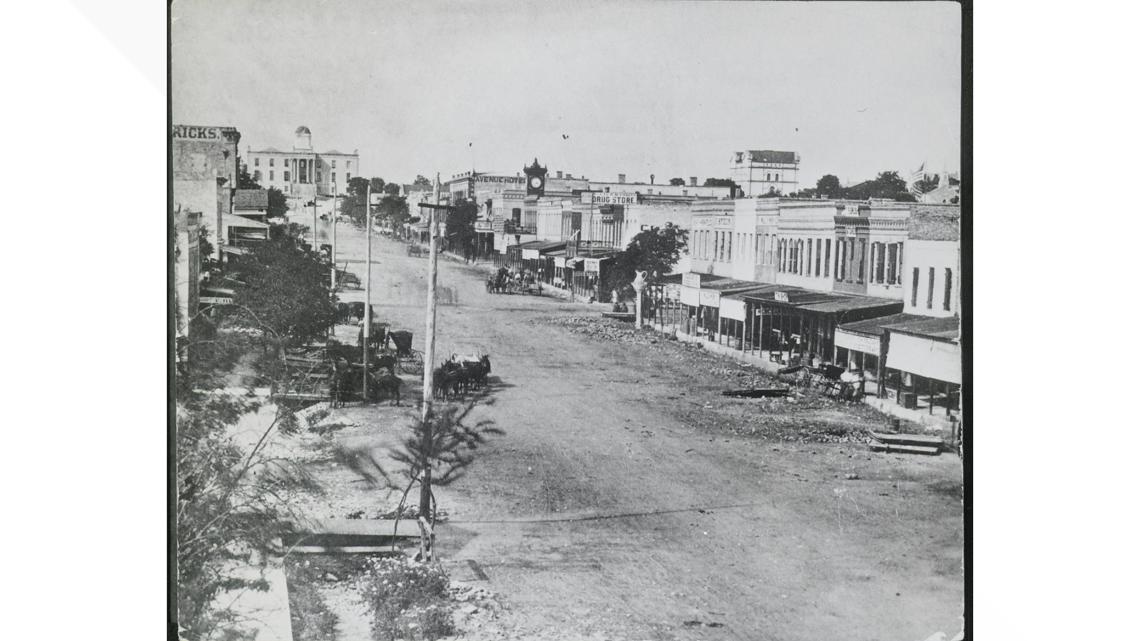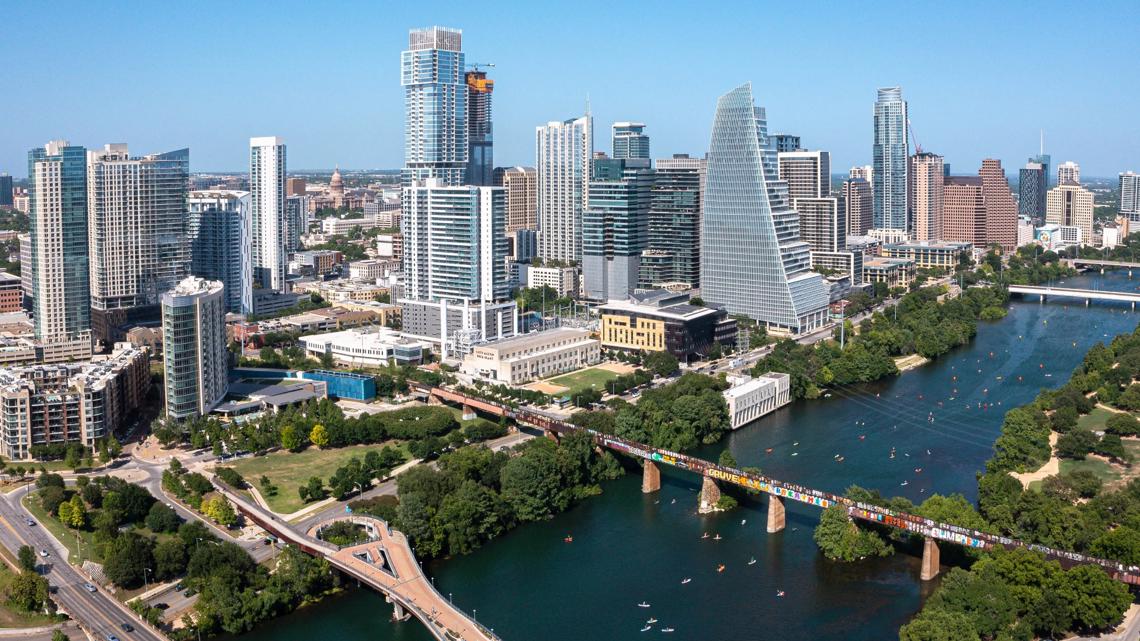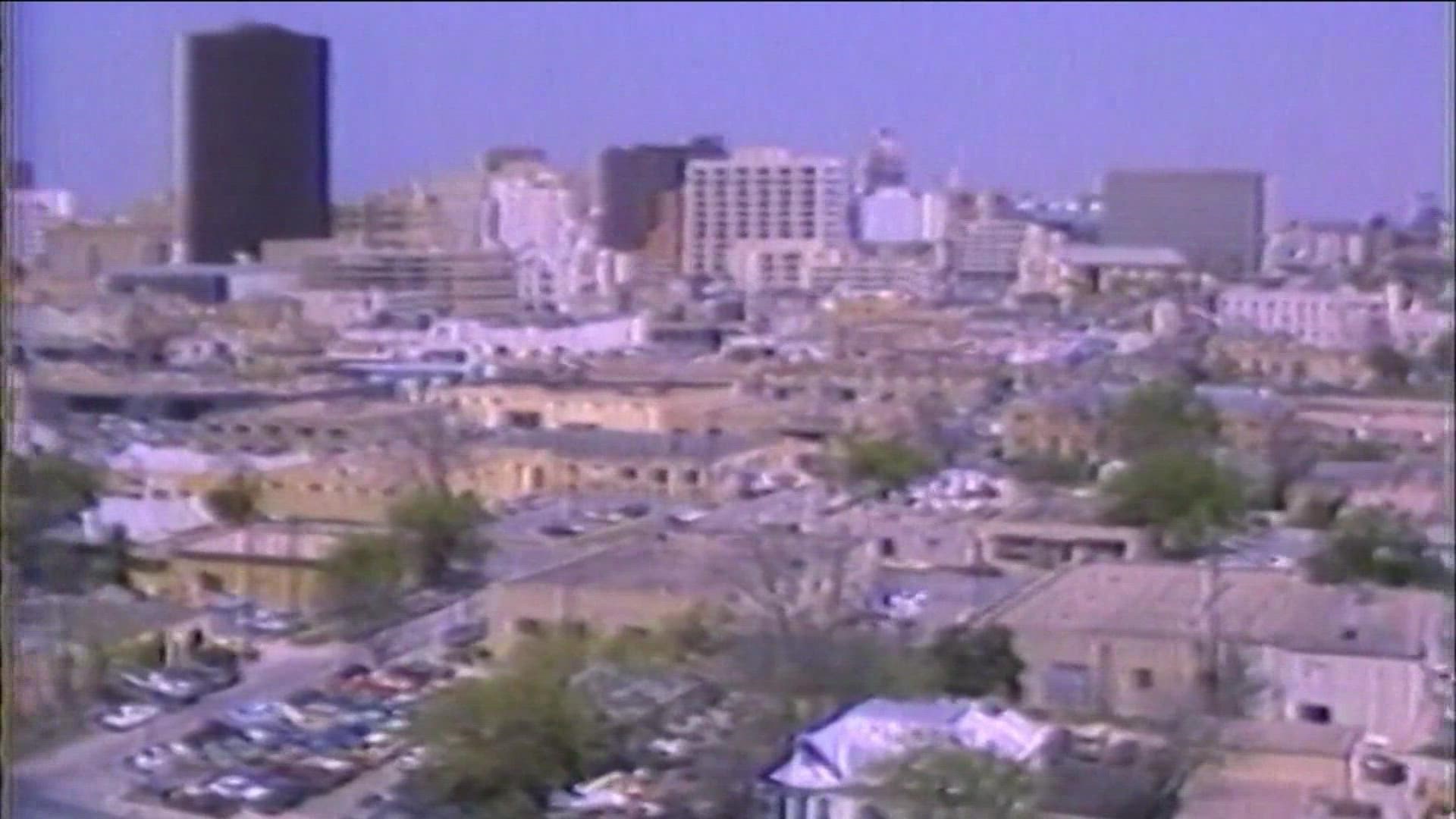AUSTIN, Texas — It's hard to imagine a time when choking dust swirled through the streets of Downtown Austin, but that was the case in the city’s central business district during Austin’s first 50 years.
Congress Avenue wasn’t paved until 1905. Pictures from the Austin History Center show Downtown Austin with single-story wooden buildings lining both sides of Congress Avenue. Early photos capture horse-drawn carriages and hitching posts. The State Capitol – built in 1880s – was the only building of any height on Austin’s dirt-topped “main street.”
By the early 20th century, the pace of Austin picked-up as electric street cars trundled up and down Congress with stops that ran from today's Caesar Chavez Street to the Capitol.


It wasn’t until 1910 that the first true high-rise building was constructed on Congress Avenue, the nine-story Littlefield Building, which still stands today.
In 1929, Norwood Tower, with its 16 stories, became the second-tallest building to pop up on the street, giving what the History Center describes as having given Congress Avenue “a sophisticated look.”
Prior to 1940, street car tracks lined the center of Congress Avenue, but the advent of personal automobiles and buses changed that. Hundreds of Austinites gathered at Sixth Street and Congress in February 1940 to witness the last run of Austin’s street cars as city buses stood by to take their place. The tracks were removed in 1942 and the metal was donated to the war effort.
It would be another 25 years from the demise of street cars that a new downtown, high-rise building emerged – and it caused a backlash. The 26-story Westgate Building, located just to the west of the State Capitol grounds, opened in 1967. The building brought a number of complaints that it blocked the view from the west of the State Capitol.
Four new buildings under construction in the 1970s led to the realization that more views of the State Capitol might be blocked as additional tall structures were erected. These included:
- 823 Congress Building in 1971
- Chase Bank Tower – a formerly golden-colored building – in 1974
- Bank of America Center in 1975
- 700 Lavaca in 1980
It was apparent that views of the State Capitol might be blocked as more buildings sprouted, so the Texas Legislature and the City of Austin developed the Capitol View Corridors plan. The “views” are defined as a plane that extends from a defined viewpoint or points that extends to the base of the Capitol dome. Adding up all the views protected by both the city and the state, there are 35 Capitol view corridors, each clearly outlined on a map that architects must take into account as they plan new buildings. City Hall has proposed additional protected views from the east side of the city.
By the 1990s, high-rise building construction downtown took off and continued at a rapid pace. The Austin skyline has been a rapidly shifting panorama of dynamic glass structures reaching ever skyward.


And what led to the growth spurt? The growth of Austin’s technology sector, according to downtown resident Mike Kennedy, president of Commercial Texas LLC.
“The rapid growth of downtown really started in the '70s with Tracor and National Instruments, companies that spun out other companies,” said Kennedy, who is past-chair of the Downtown Austin Alliance. “As we went from what was largely a university and government town, technology became the driver. Until 1995, public-sector jobs outnumbered private-sector jobs. So the business community was a minority until 1995, which is when Dell Computers took off.”
Kennedy credits Dell's success as “a foundation for the tech success here, along with Austin's great quality of life.”
It’s apparent that the growth of Austin’s downtown will continue, so what does the future hold? Architect Jim Susman, who lives and works downtown, believes the area remains ripe for new opportunities.
“I can envision a civic center, not convention center, but civic center that is open and enticing for Austinites to come to, not simply a place that people go to from out of town on weekends,” Susman said. “I can envision in that great rail system that ties the city together and enlivens the street life and the pedestrian and retail experience. I could see that throughout downtown as well as beyond.”
And it’s a future that Susman said won’t necessarily be about work.
“I can see an improved and expanded trail system that goes further east of Longhorn Dam that binds the city together with sort of a common green space,” said Susman.
Finally, no overview of downtown would be complete without citing some of the challenges brought on by its rapid growth. Critics point to traffic woes, the lack of affordable living spaces, the perception of increased crime and the challenge of caring for Austin’s homeless population. Still, Kennedy said downtown is a vibrant, exciting place to work and live.
“Downtown belongs to everyone in Austin, and I would encourage everyone to come down and see the authentic Austin. From the Driskill Hotel to the Indeed Tower to the iconic restaurants, it’s a place where everyone should feel welcome,” said Kennedy.
Boomtown is KVUE's series covering the explosive growth in Central Texas. For more Boomtown stories, head to KVUE.com/Boomtown.

